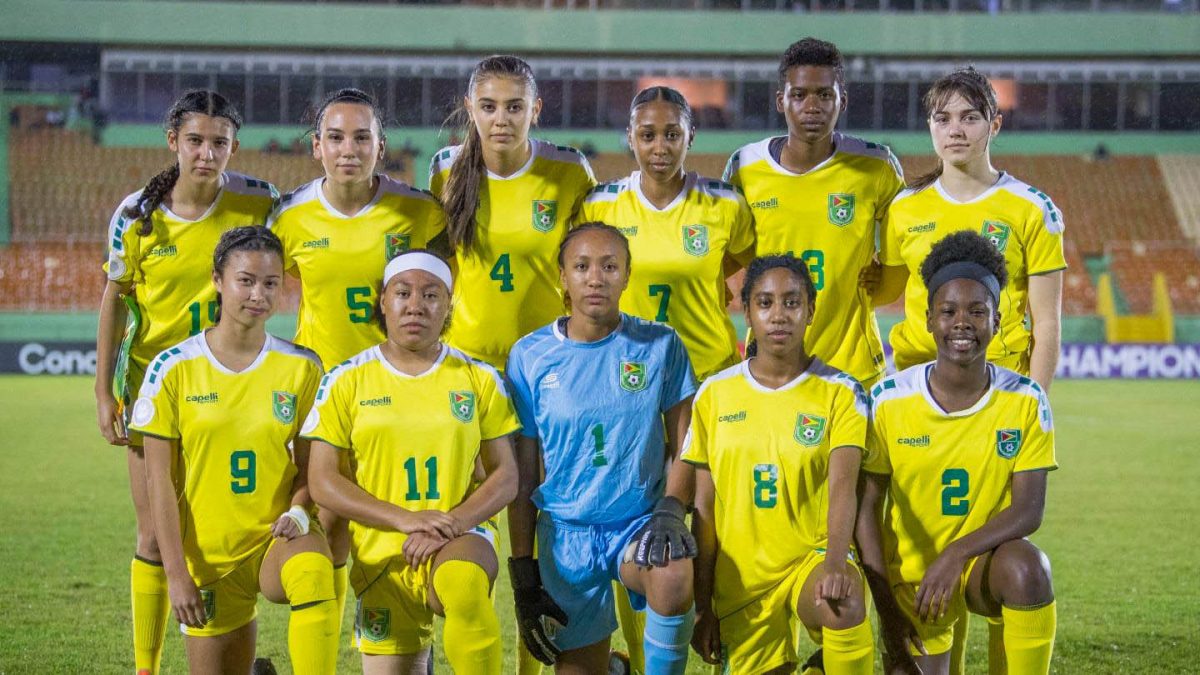
The article, which was heralded within the corridors of the Guyana Football Federation (GFF) and features quotes from the GFF President as well as its Technical Director, lauds the entity’s investment in the female game, a venture which started in 2016 following the arrival of Englishman Ian Greenwood.
According to the article, “The start of Guyana’s progression dates back some four years with the arrival of current Technical Director Ian Greenwood, and the national roll-out of a female-targeted grassroots campaign. Soon after came Guyana Football Federation’s (GFF) first Women’s Development Officer, Tricia Munroe, such an appointment being a central part of a national football development strategy. 2018 proved to be even more significant with a women’s national league held and the international senior women’s programme re-launched. The nation also hosted matches in qualifiers for the Concacaf Women’s Championship.”
The Lady Jaguars boast a proud history of success despite their recent birth which occurred in 1996. After all, it is the first football unit of the GFF to advance to a senior continental championship following the 2010 Gold Cup qualification, a feat that preceded their male counterparts and the country’s marquee programme, the Golden Jaguars by nine years.
However, to say the article is a true reflection of women’s football locally is grossly inaccurate and borderlines on propaganda. Women’s football continues to live a marginalized existence locally. This is not merely the opinion of this author, but simply a fact that cannot be contested, by its lack of programmes, tournaments and overall visibility.
Evidence can be easily proffered; the Always Women’s Developmental League, launched in October 2018, officially concluded on January 2020 following numerous walkovers, resumptions and postponements before its eventual conclusion, and is testament to the local standing of women’s programme.
Such was the inaccuracy of the article, which was published on Thursday on the Women’s section of the FIFA website, that it listed Ian Ford as the President of the GFF. I guess this goes hand-in-hand with majority of the story.
The article continues, “But it is in women’s football where Guyanese investment over the past few years is starting to yield tangible rewards. The national side – the Lady Jags – qualified for the eight-nation 2010 Concacaf Women’s Championship to provide an early insight into their potential. More recently, the U-20 side won an unprecedented six straight matches en route to the quarter-finals of the continental championship, falling just one step short of what would normally be the FIFA U-20 Women’s World Cup qualification round. Their charge was ended only by a strong Haiti side and their free-scoring forward Melchie Dumornay, with the Caribbean nation impressing in their maiden U-20 Women’s World Cup appearance at France 2018.”
“This success is no accident,” Greenwood told FIFA.com about the U-20 team’s achievements. “It is clear evidence that the GFF’s national football philosophy and robust youth development strategy are producing top-class performers and coaches. The GFF ATC (Academy Training Centres) academy programme is regarded by FIFA/Concacaf as a model of best practice for a youth development structure within the Caribbean region. We have a national playing and coaching philosophy, which is implemented across all national teams, combined with an age-specific coaching curriculum. Coach education has reached new heights since 2016 with a record number of licensed coaches and instructors in Guyana. This new workforce of talented grassroots coaches is continually unearthing and nurturing new female talent. Through Guyanese migration, we have a unique situation, which means we have a large talent pool abroad to select from based in Canada, USA and the UK. These players significantly strengthen the group due to playing in stronger leagues.”
“This has severely impacted the growth and development of the game at club and community level. However, despite these fundamental challenges, the female game remains most popular throughout our hinterland regions and is played spiritedly, year-round, by our indigenous tribes, where countless talented national team players have been discovered over the years.”
Really? Interestingly enough, no player from the Rupununi Football Association (RFA) – a body which leads the way in terms of women’s football – is on the U20 or senior women’s programme presently based on the rosters of the teams which competed in the respective campaigns. This was never mentioned in the article despite the praise for our sisters in the hinterland communities, whose love for the sport is unmatched especially due to their close proximity to neighbor Brazil, the Mecca of South American football. I wonder why?
Excerpts from the article further state, “The recent performance of the U-20 women’s team was a watershed moment for the country, signaling to the powerhouses of Concacaf that Guyana had arrived,” Greenwood added. “They represented the spirit of the Golden Arrowhead [Guyana’s National Flag] with heart, determination and self-belief throughout the competition. The success of the team really caught the imagination of the general public in Guyana, which was fantastic for the football brand in a nation better known for its cricketers. The team’s performances inspired a lot of young girls to get involved in football and showcased what we can do with the right approach.”
The truth is, the investment which was praised by the unknown author, should be afforded to Canada, the birth place and home of many of the girls who don the colours of the Lady Jaguars, following years of development in that country’s robust structures. I guess this is the unique situation with regards to migration, which was mentioned earlier by Greenwood.
What is factual is that the Lady Jaguars created history by becoming the first national U20 female team from Guyana to play in a 16-team tournament in the form of the CONCACAF Women’s Championship.
What is also accurate is that the campaign must be considered a success following a quarterfinal appearance combined with a record of three wins and two losses in the preliminary rounds.
However, what is also accurate is that the success of the team and the overall programme cannot be afforded to the federation. In principle, actual investment is required if development is to occur locally, not the ability to solicit service and success through the utilisation of passports and lineage.
Given the limitations and lack of investment locally, the Lady Jaguars programme, junior or otherwise, has been solidified with overseas-born players. This is especially true at the U20 and Senior sections. A simple analysis of the U20 team confirms this prognosis, as the team featured 85 per cent foreign born or based players, all entirely from Canada. That is effectively 17 of the 20 players who made the trek, and as such, extinguishes the notion that “Guyana reaps rich rewards for investment”.
Even analysis of the numbers from the event highlights the expected importance of the foreign based players, as 192 minutes was accrued by three locally based individuals from the 450 regulation minutes of the event. If the narrative of investment, means procuring overseas born players for representation and accomplishment while the local landscape continues its downward spiral, then the GFF is ahead of the developmental curve.
Maybe a piece of similar ilk should have been conceptualized for Haiti, a country which is a standard bearer in the region for women’s football despite the backdrop of being the poorest nation in the western hemisphere according to the United Nations Development Programme.
The Haitians, who eliminated Guyana on their way to a semifinal finish, featured a squad comprising of more than 70 per cent locally developed players, individuals that were honed at Camp Nou, the country’s national football academy which was commissioned in 2012.
Ultimately, the GFF is a recipient of annual funding from FIFA for actual development in women’s football. But the narrative remains the same, the amount received or the avenues where the investment occurs locally, is unknown by majority of the populace, as the federation remains silent on this subject matter. I suppose the actual investment and development translates into funding for the national programme only. I guess they are reaping what they sow.





